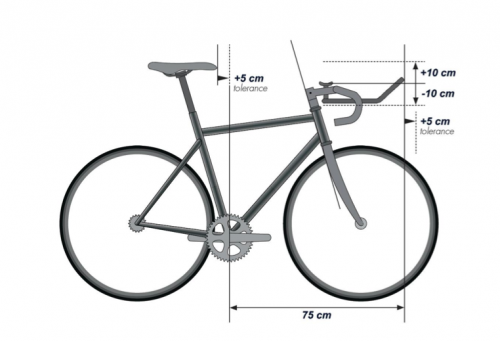AIGLE, Switzerland (BRAIN) — The UCI on Friday reminded the industry that starting in the new year, it will relax some rules on how riders are positioned on time trial bikes, making the bike approval process at races quicker and more predictable.
Earlier on Friday, BRAIN reported that the UCI had delayed implementation of new tests for aero wheels, and that the bike industry was increasingly optimistic about improved relations with the UCI. Brian Cookson was elected the organization's president in September, after a contentious election in which he promised reforms in a number of areas.
On Wednesday, the U.K. website Cycling Weekly reported that aero bike designer Dimitris Katsanis, who developed Team GB's time trial bikes, will be appointed as a consultant to the UCI's Equipment Commission. Katsanis' appointment is viewed as another signal that the UCI is open to new ideas from the industry.
The new time trial position rules were originally announced in February 2013 in a UCI technical bulletin. The biggest change is that all time trial bikes can be approved based solely on the bikes' measurements, without having the rider present. Previously, riders could request a "morphological exemption" from the standard rules based on their physical proportions. The exemption relaxed the positioning rules a bit, but required each rider requesting an exemption to be measured on the bike — and as many as 80 percent of pro riders requested this exemption.
This meant that 80 percent of riders had to bring their bikes to a UCI commissaire for approval before each event, an inconvenience that added to pre-race stress and delay. That practice also introduced a large amount of subjectivity and variability as riders could adopt a position for the measurements that differed from their actual race position, and commisaires interpreted the rules differently.
The positioning rules were originally put in place to discourage extreme positions in time trials, such as those used by Graeme Obree and Chris Boardman in the 1990s. Even a less extreme position, like the so-called "Praying Landis" position with the rider's forearms angled up sharply in front of his face, was discouraged by the rules, although some riders still found ways to approximate that position in practice.
In a letter to the industry Friday, UCI technological coordinator Matthieu Mottet said the new rules will "allow the checks conducted by commissaires at the start of races to be simplified and improved and their repeatability ensured. There will no longer be any need for interpretation and the regulations will be applied uniformly throughout the season."
In the past, riders could request a "morphological exception" to the standard positioning rules if their proportions put them out of a certain range. As many as 80 percent of pro riders requested the morphological exception. Under the new rules, riders with the exception can choose one of two positioning guidelines to accomodate their needs: either moving the tip of the saddle forward to be directly above the center of the bottom bracket, or positioning the handlebar extension forward up to a maximum of 80 centimeters in front of the center of the bottom bracket.
The UCI also clarified two other points related to the bike measurements:
- In 2014, all types of aero shift levers will be measured from their furthest point forward. Bar-end-style shift levers will be measured with the lever positioned straight forward in line with the aero extension. Previously, the UCI had different rules for measuring mechanical and electric shifters. (See related VeloNews.com article)
- The height difference between elbow supports and the highest and lowest points of the handlebar extension is limted to 10 centimer. This rule is intended to ensure that riders' forearms are horizontal (not in the Praying Mantis position, for example). Previously, the rider was positioned on the bike and the angle of his or her forearms was measured.
In the letter, Mottet said, "This means that, from 2014, only the bicycle will be checked and the rider will no longer be asked to attend together with his or her bicycle. This will mean that riders are not disturbed in their preparations just before the start of the race. These changes will afford riders more freedom while avoiding any risk of disqualification during the race due to the adoption of a non-regulatory position that is sometimes involuntary because of the effort involved."


